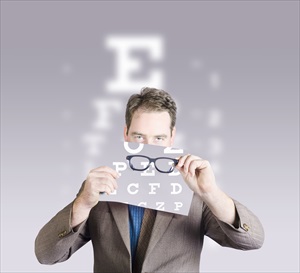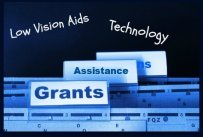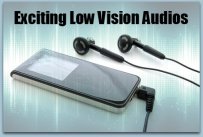Assistive Technology for
Visually Impaired

Assistive technology for visually impaired is a new wave of technological advancements designed to help those with low vision or blindness function in their everyday lives. Those suffering from low vision cannot read or write like those with full vision. Students who cannot see clearly may have difficulty decoding the words they are reading – making it hard to keep up with the rest of their classmates.
Assistive technology provides the accommodations, adaptions and modifications people with visual impairments need to function.
Assistive Technology Equipment and the Federal Government
The federal government has recognized the need for assistive technology, especially for those who have difficulty seeing. Assistive technology for visually impaired is now incorporated in schools as a part of the educational process – instead of being considered a rehabilitative process. Also, there are different types of funding for assistive technology now available so that schools and other programs can gain access to these new technologies.
assistive technology for visually impaired
how it works
Assistive technology for visually impaired People suffering from low vision have difficulty seeing clearly, identifying shapes and colors and may even be barred from reading and writing. This type of technology can help people with low vision:
· Learn along with classmates in school.
· Improve their reading, writing and organizational skills.
· Help students in school write research papers and use proper vocabulary for their age.
· Improve a person’s note-taking and letter-writing skills.
· Master simple, yet necessary concepts.
Types of Assistive Technology for the Visually Impaired
The types of assistive technology vary, but there are some exclusively designed for those with low vision or visual impairment. Some technology available to these types of individuals include:
· Daily Living Aids – These help with activities such as getting dressed and even reading labels on products a person is using.
· Vision Impairment Aids – These include magnifiers, speech output devices, larger printed screens, braille, and closed circuit television.
· Environmental Aids – These help people control their homes easier, including answering the telephone, dialing the phone or turning on the TV.
· Home and Work Modification Aids – These reduce any barriers that could pose a physical threat to the low vision individual.
Apps and Assistive Technology
Apps are a relatively new form of assistive technology for visually impaired. These apps can include daily modifications and visual impairment aids to help a person with low vision function in their everyday life.
The Talking Calculator, for example, is a tool that can be used for adults or students. It is designed for users with low vision of all ages and features colorful, large buttons, high contrast and VoiceOver support. Individuals using the app can calculate items, use speech to reach an answer, and even generate a formula. It can be used in everyday life as well as in school.
TheTalking Calculater App is available through Low Vision Technologies. This app is a paid app..
Assistive Technology for Computers
Screen reading technology is most likely the most important area of advancement over the years that has helped anyone with low vision participate in the Internet age.
Companies like Serotek, GW Micro, and Freedom Scientific have made breakthroughs in how all of us participate online.
For example, Serotek’s Socializer allows for better experience on Facebook, Twitter and Skype and their DocuScan Plus allows you to hear anything you scan, such as bills, newspapers, magazines, brochures, mail, or books.
GW Micro’s Window-Eyes helps you gain control over and hear everything you see on your computer screen. You can use either your mouse or your computer’s keyboard to navigate your computer and Internet.
Freedom Scientific offers a wide range of assistive technology for visually impaired, such as screen readers and large print keyboards.
Portable Reading Devices
Devices such as the BookSense audio book or the Victor Reader Stream allow you to enjoy books, mp3’s, mp4’s, etc on the run.
In America, you can qualify with Bookshare™ and enjoy, for free, books and periodicals that are offered through a division of the Library of Congress, The National Library Service for the Blind and Physically Handicapped (NLS).
Access to Basic Electronics
There are now kitchen appliances, such as talking microwave ovens, which assist people with low vision. As well, you can gain access to automatic appliances and devices for cleaning and vacuuming, even washers and dryers.
Talking GPS devices, such as Trekker, BrailleNote GPS, and Mobile GEO are available. This technology will use Global Positioning Systems to locate where you are and then communicate through voice the directions to your destination.
Like you, I live with low vision. I understand the emotional toll it takes. However, when you become aware of all the high gadget gear available, it’s truly is amazing the way our way of life can be improved and how so much more independent you can become.
If you’d like to fully understand these technological advancements, fill out the form below and I’ll send you more details.
Get Exciting Low Vision Technological Secrets Sent To You...
Further Resources
Assistive Technology Equipment is fantastic for helping those of us with low vision to thrive in life. Discover the various types of high tech gear that allows you to live independently.
Assistive Technology Services - Exciting assistive services include low vision radio! Help also exists in terms of technology, webinars, professional development, etc.
Teaching Visually Impaired Students - A big aspect to teaching visually impaired students is making proper use of assistive technology. Discover the cutting edge high tech gear students can use to live independent lives.
Low Vision > Assistive Technology for the Visually Impaired

















